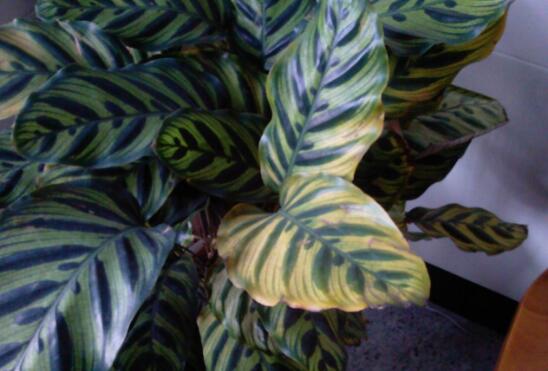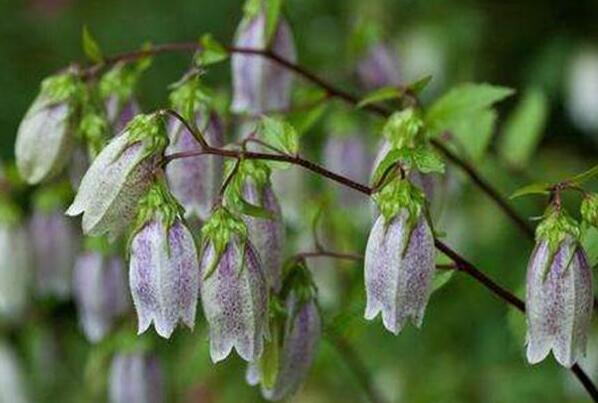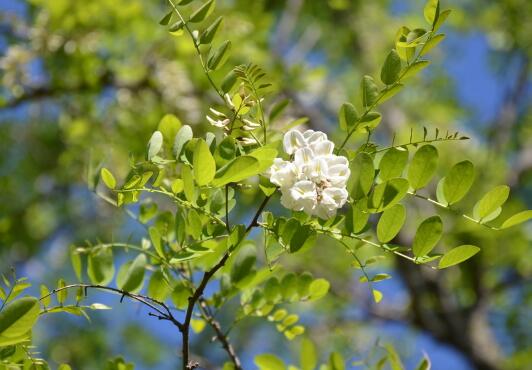What to do when the peacock taro grows, the disease and pest control of the peacock taro / pay attention to the leaf spot
The beauty of peacock bamboo taro lies not only in its evergreen leaves, but also in the pattern of peacocks on its leaves. In life, many people like to plant peacocks and taros at home, but for some reason, they will grow worms and get sick, so there is no appreciation at all. So, what should we do if the peacock and taro grow into worms? The following is 4 minutes of peacock bamboo taro pest control, follow the editor to understand and have a look.
1. Peacock bamboo taro worm, spray with medicine

As a common indoor potted plant, the breeding method of peacock taro can be said to be very simple, as long as it is placed in a warm and ventilated semi-shady environment and watered frequently to ensure that the potted soil is moist. But because the novice is in the majority, they often cause the emergence of diseases and insect pests due to improper breeding, thus affecting the ornamental nature of the plant. next, let's take a look at the peacock bamboo taro has several kinds of diseases and pests.
2. Disease and pest control of peacock bamboo taro
1. Peacock bamboo taro leaf spot
Peacock bamboo taro is adaptable and rarely gets sick, but it can also suffer from leaf spot disease in a hot and unventilated environment.
Symptoms of the disease: at the initial stage, there are small yellow-brown spots on the peacock taro leaves, and halos will appear on the edges; in severe cases, the spots will quickly spread to every branch and leaf of the peacock taro, eventually leading to the withering and death of the peacock taro.
Prevention and control methods: in order to reduce the source of the disease, all the diseased branches should be cut off in order to reduce the source of the disease, and then the relevant agents should be sprayed. 38% cuproloxil 800 × 1000 times liquid, or 4% fluorosilazole 1000 times solution, sprayed once every other week, three times in a row can be effective.
2. Scale insects
In addition to diseases, peacock taro will be infested by insect pests, of which the most common is the shell insect, which will attach to the leaves and absorb nutrients and water.
Symptoms of damage: peacock taro will grow badly, and the leaves eaten by shell insects will also cause other diseases, which will directly lead to the withering and death of peacock taro.
Prevention and control methods: when a small amount of shell insects are found, they can be manually treated with brushes; if a large number of shell insects are found, they need to be sprayed with 50% malathion 1500 times or 1000 times of imidophos, spraying once a week and twice in a row.
3. Red spider
Mites are arachnid pests, which are one of the common pests that harm peacocks and taros. The insect often occurs when there is poor ventilation and harms the top of the plant.
Symptoms of damage: the top of peacock taro is reddish brown and there are cobwebs, affecting plant growth and development.
Prevention and control methods: after discovering diseases and insects, you can use enemy killing to deal with them, and you can also spray anti-mite 25% EC 800x solution, 73% Ketate 2000 times liquid and other drugs.
4. Aphids
If a peacock taro worm is found, it is likely to be an aphid, which generally appears in young leaves and newly grown buds and feeds on the sap in the leaves.
Symptoms of infringement: peacock bamboo taro leaves turn yellow, and black or yellow disease spots appear at the same time.
Control methods: in the initial stage of aphid occurrence, 40% omethoate 1500 times liquid or 90% trichlorfon solution can be sprayed to control aphids, and usually pay attention to reasonable watering and fertilization to improve its resistance to diseases and insect pests.
In the process of raising peacocks and taros, for various reasons, it is inevitable to encounter the illness of long worms. At this time, we should not be in a hurry, but should calmly find the cause, and then follow the above prevention and treatment methods to solve. With regard to the prevention and control of diseases and insect pests of peacock taro, the editor has introduced this, hoping to give you some help.
How to control the long insect of double-line taro, how to control the diseases and insect pests of double-line taro / 3 insects and 2 diseases
As a beautiful foliage plant, double-line taro has colorful leaves, white, green and red are equal, looking extremely beautiful! But in indoor farming, because of environmental differences, maintenance of negligence, will encounter a lot of problems, such as long worm disease, that double-line taro long worm how to treat? The following is the pest control of double-line taro. Let's go and have a look.
First, how to control the long worm of double-line taro?
In the process of raising double-line taro, for a variety of reasons, it is inevitable to encounter the disease of long worms. Among them, the main pests are aphids, shell insects and red spiders, and the diseases are leaf spot and white silk disease, which will endanger the health and beauty of the plant. As for how to treat the double-line taro worm, we should spray it in time to prevent and cure it.
2. pest control of double-line taro.
1. Double-line taro aphids
If the double-line taro worm is found, it is likely to be an aphid, because it is the main pest of foliage plants. The insect generally appears in young leaves and newly grown buds and feeds on the juice in the leaves, resulting in yellowing of double-line taro leaves and black or yellow disease spots.
Control methods: when there are few aphids, you can take artificial control of aphids, brush off the aphids with a brush and bury them in the basin soil; when there are many shell insects, you can spray 1500 times of omethoate or 90% trichlorfon for control. Usually pay attention to reasonable watering and fertilization to improve its resistance to diseases and insect pests.
2. Double-line taro scale
When the environment is not ventilated and improperly maintained, double-line taro is also easy to produce insect bugs. The insect will attach to the leaves and absorb nutrients and water, resulting in poor growth of double-line taro, and eating taro leaves by shell insects will also cause other diseases, which will directly lead to the withering and death of double-line taro.
Prevention and control methods: when a small amount of shell insects are found, they can be manually treated with brushes; if a large number of shell insects are found, in addition to artificial insecticide, they also need to be controlled with spraying, which can be controlled by 1500 times of malathion or 1000 times of imidophos. Spray once a week, twice a week can be effectively controlled.
3. Double-line taro red spider
In addition to aphids and shell insects, red spiders are also the main pests of double-line taro. The insect often occurs when the ventilation is not good, it mainly uses mouthparts to pierce into the leaves of double-line taro to suck juice, which destroys the chlorophyll of the plant, yellowing the leaves slightly, and even falling leaves seriously, which seriously affects the ornamental.
Prevention and control methods: after discovering diseases and insects, you can use enemy killing to deal with them, and you can also spray anti-mite 25% EC 800x solution, 73% acarate 2000 times liquid and other drugs.
4. Leaf spot of double-line taro
Double-line taro is adaptable and rarely gets sick, but it can also suffer from leaf spot disease in a hot and unventilated environment. In the early stage of the disease, there are small yellow-brown spots on the leaves, and halos will appear on the edges; in severe cases, the spots will quickly spread to each branch and leaf of the double-line taro, which will eventually lead to the withering and death of the double-line taro.
Prevention and treatment methods: after the above symptoms are found, cut off all the diseased branches in time to reduce the source of the disease; then spray the relevant agents, you can choose 38% cuproloxil 800 × 1000 times liquid, or 4% fluorosilazole 1000 times liquid, spray once every other week, three times in a row can be effective.
5. White silk disease of double-line bamboo taro
In the double-line taro diseases and insect pests, white silk disease also needs everyone's attention. The disease is often serious in July and August, but it often occurs at ordinary times, often because the soil is too wet and barren. When the disease occurs, it will cause purple-brown spots on the leaves, followed by a clear white mycelium layer, and in severe cases, the plant will wither and eventually die.
Prevention and treatment methods: after the above diseases are found, fungicides such as carbendazim, Bordeaux solution, Baume sulfur mixture and other fungicides are sprayed on the stem base and substrate in time, or after the disease, the basin soil with bacteria is removed directly and sprinkled with pentachloronitrobenzene powder or lime.
With regard to the prevention and control of diseases and insect pests of double-line taro, this is the end of the introduction. I believe that if you encounter a double-line taro worm or get sick again, you should know how to do it! Generally speaking, the breeding method of double-line taro is not difficult, as long as we take good care of it, bugs will not come to us. Finally, may your double-line taro grow beautifully.
How to deal with Leaf spot Disease of Peacock Bamboo Taro Culture method of Peacock Bamboo Taro
Peacock bamboo taro in the growth process, often suffer from leaf spot disease, peacock bamboo taro leaf spot disease how to do? Next, let's take a look at the culture method of peacock bamboo taro.
How to deal with Leaf spot of Peacock Bamboo Taro
Symptoms: the leaf spot of peacock taro is yellowish brown, small yellow spots are formed near the edge of the leaf or in the center of the leaf at the initial stage of the disease, and gradually expand, the color deepens and turns to yellowish brown, and there is a relatively obvious halo on the periphery of the disease spot. With the expansion of the disease spot, the leaves gradually withered and atrophied, so that they fell off and died. The pathogen is the sporulation of the half-known fungus Deutschia. The causes of the disease are high temperature and humidity, poor air circulation, over-dense arrangement of plants, too many weeds and rotten leaves in the cultivation environment, excessive application of nitrogen fertilizer, and overgrowth of plants. Young tissue is easy to get sick.
Solution: timely removal of diseased and residual leaves and weeds to reduce the source of infection. Plant placement is not easy to be too dense, properly ventilated and transparent, reduce the humidity of the environment, can reduce the disease. Spray protection in the event of illness.
Medicament: 50% carbendazim 600 times to 800 times, or 75% chlorothalonil 600 times to 800 times, 50% mancozeb 500 times to 600 times, every 7 to 10 days. All kinds of drugs should act alternately to prevent bacteria from developing drug resistance.
Prevention and control methods: strengthen fertilizer and water management, properly increase the application of phosphorus and potassium fertilizer, less nitrogen fertilizer, promote plant growth and enrich, enhance their own resistance.
Culture methods of peacock bamboo taro:
1. Habits: Peacock bamboo taro likes a high-temperature and humid environment. Although it is a solar plant, it can also be placed in a shady place for a long time. It is generally recommended that the illuminance is scattered below 50%, and you like the environment with good drainage and fertile soil.
2. Cultivation and breeding: Peacock bamboo taro is suitable for all-day light in spring and autumn, while semi-shading is recommended in summer, and fluorescent lamp can be used to illuminate flowers in winter if there is little light. In general, it is recommended that the temperature is above 20 degrees Celsius, but the temperature is not higher than 35 degrees Celsius, because it will be burned. The leaves curl because of the high temperature. No less than 5 ℃ in winter. Peacock bamboo taro likes a humid environment, so it is recommended that the humidity of bamboo taro be kept at about 70%. Growth should be fully watered to maintain the moisture of the soil, but be careful not to accumulate water.
3. Daily maintenance: if the peacock taro is found to have relatively small flowers and dim markings, it shows that it is short of fertilizer. It is generally recommended to apply fertilizer once every 20 days during the growing period, and it is recommended to apply thin fertilizer. It is recommended to stop fertilizing when you stop growing in winter and summer. Watering as the most important part, the growing period should be fully watered, but not stagnant water. After flowering, attention should be paid to watering control. Dry rewatering is generally recommended.
4. Cultivation precautions: Peacock taro is a shallow root plant. Before planting or transplanting, you can choose a large shallow pot as the choice of pot planting. The soil suggests that the sand should be mixed with the garden soil, preferably containing some corrosive matter. The time of changing the basin is generally controlled at once every two years. Attention must be paid to maintenance in winter, because if it is watered too much or the temperature is low in winter, it will cause death.
More information
- Prev

Disease and pest control methods of Campanula, prevention and treatment skills of two insect pests / two diseases
Any flower friend does not want to see wind chimney worms or disease spots, but in order to prevent plants from being infested by pests and germs, in addition to mastering the culture methods of bluebells, we also need to do a good job of prevention and treatment. at present, the main diseases and insect pests are aphids, red spiders, powdery mildew and leaf spot.
- Next

What should we do if the locust flower grows insects? pest control of Sophora japonica flower / 2 insect pests 2 diseases
First, what to do when the locust flower grows, find the reason and want to know what to do when the locust flower grows. First of all, we need to know what kind of insect is growing, so that we can deal with it pertinently, because the pest control methods of each kind of locust flower are different. The details are introduced below. Let's take a look.
Related
- Fuxing push coffee new agricultural production and marketing class: lack of small-scale processing plants
- Jujube rice field leisure farm deep ploughing Yilan for five years to create a space for organic food and play
- Nongyu Farm-A trial of organic papaya for brave women with advanced technology
- Four points for attention in the prevention and control of diseases and insect pests of edible fungi
- How to add nutrient solution to Edible Fungi
- Is there any good way to control edible fungus mites?
- Open Inoculation Technology of Edible Fungi
- Is there any clever way to use fertilizer for edible fungus in winter?
- What agents are used to kill the pathogens of edible fungi in the mushroom shed?
- Rapid drying of Edible Fungi

